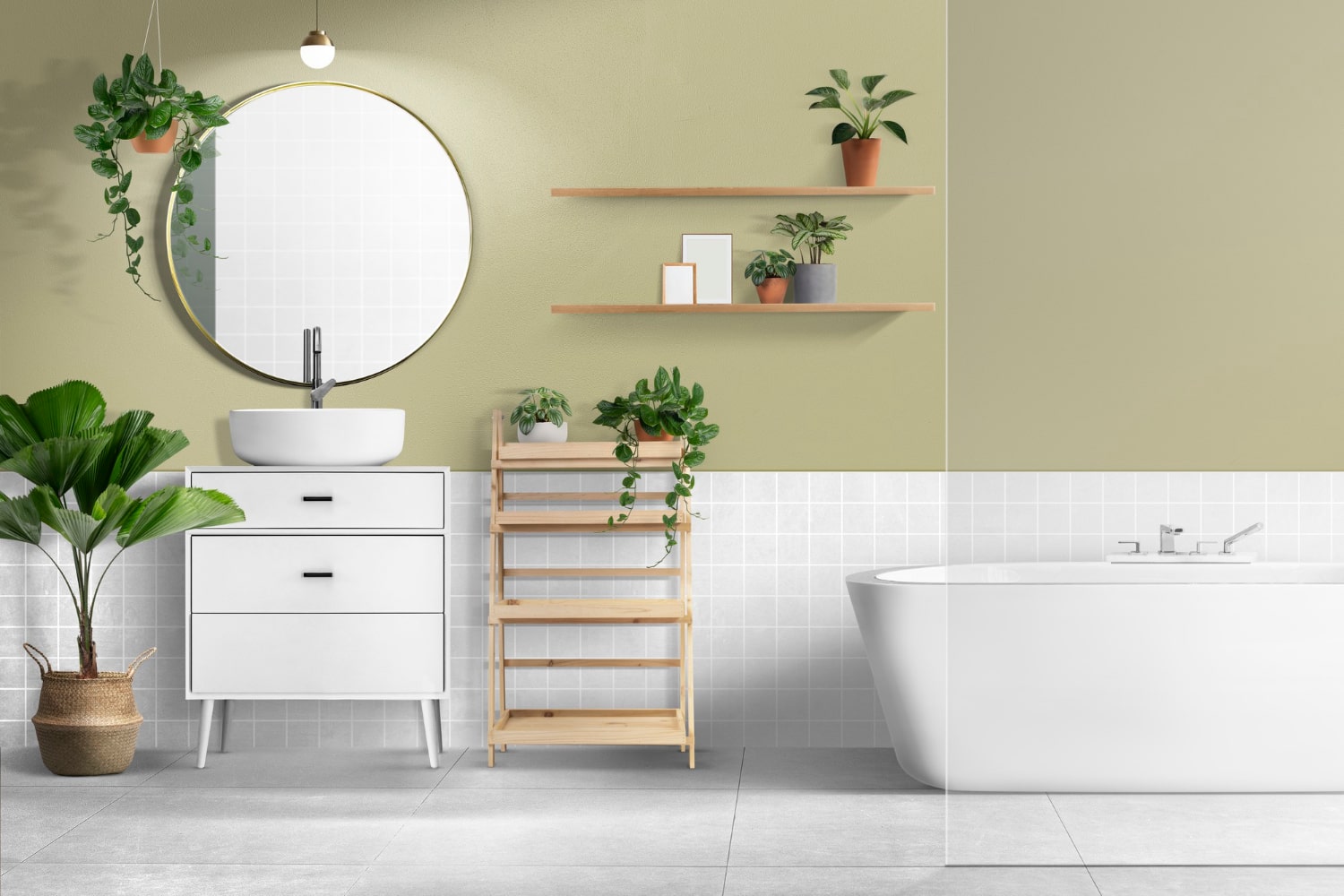
Every single step counts toward reaching a more sustainable way of living. For instance, switching from single-use to refillable water bottles is a fantastic place to start. If solar panels are not feasible this year, consider investing in a smart thermostat. When those modest adjustments add up, we can make significant strides toward sustainable living, and your bathroom is an excellent place to start. Consider the number of single-use items you use daily, not to mention the plastic bottles that accumulate in your shower. The following are some of our favorite environmentally friendly bathroom items and ideas.
1. Install a Water-Conserving, Dual-Flush Toilet
Unfortunately, water is often squandered inefficiently due in large part to outdated, high-consumption gadgets. Adding a bathroom to your house continues to be one of the most popular and satisfying home upgrades. However, you may take it further by installing a water-efficient toilet.
Plumbing professionals have developed revolutionary, eco-friendly technologies like the toilet and sink combo that enables rapid and simple installation with little fuss and mess in residential and commercial applications. However, installing a bathroom throughout your home, on a second story, in a basement, a garage, or in a building built on a slab involves cutting through concrete or flooring to enable below-floor drainage. This work might be rather pricey due to its difficulty and duration.
2. Add Motion-Sensitive Faucets
The bathroom sink is another area where water is squandered at an alarming rate. Despite their best efforts, most individuals end up using more water than necessary while washing their faces or hands or brushing their teeth. Consider how much water is wasted when you move your hand between faucet handles as you go about your daily routine. Installing a motion sensor faucet is one way to prevent this wasted water from accumulating into a pool the size of the Pacific. A motion sensor will be able to determine when H2O must flow precisely. Additionally, using this type of faucet will help keep your bathroom cleaner and prevent germs from spreading and recontamination.
3. Make Use of Organic Materials
The use of sustainable materials is critical for a fully eco-friendly bathroom design. It all starts with the manufacturer and the origin of the materials. Consider if the materials you choose will serve a long-term function and can ultimately be recycled.
The goods may be employed as construction components or integrated into your bathroom through other frequently used bathroom products. Convenience is now inextricably linked to sustainability, allowing customers to spend less and save time while protecting the environment.
4. Install New Light Bulbs
If you haven't already switched to LEDs, this is the ideal time. In the last few years, enormous scientific advancements have been achieved in the color rendering of LED lightbulbs, and customers may now purchase "warm LED lights" that emit the same pleasant amber color temperature as traditional incandescent lamps.
Switching to LED light bulbs is one of the easiest methods to reduce your energy cost and eliminate the need to purchase new bulbs regularly. Since LEDs use less energy without compromising lumens or light quality, a single bulb may help you save hundreds of dollars on your monthly energy bill. LEDs are rapidly gaining popularity, and there are several options available.
Another compelling incentive to convert is that high-wattage lightbulbs will be phased out of retailers during the next three years. To prepare for the phase-out, you'll want to stock up on low-energy bulbs immediately. If you're interested in learning more about how to make the transition, check out our how-to video.
5. Paint with Low Volatile Organic Compounds
The majority of paints include Volatile Organic Compounds, which are carbon-based chemical compounds hazardous to human health and the environment, contributing to global warming. Additionally, they might be emitted for years after the paint has been cured.
Legislation restricting the use of VOCs in paint has been enacted, and the availability of low VOC paint has expanded in recent years, so there is really no excuse not to pick it.
Finally, discontinue using harsh chemicals to clean tubs and toilets. Pay close attention to the warning labels on cleaning products required by law. Pursue items with the word "caution" or seek out environmentally conscious businesses.
You may also like
7 Ways to Make the Roof of Your Home Eco-Friendly
How to Reduce Your Home's Energy Consumption
A Guide to Sustainable Home Renovation
5 Ways to Save Energy and Become More Eco-Friendly
